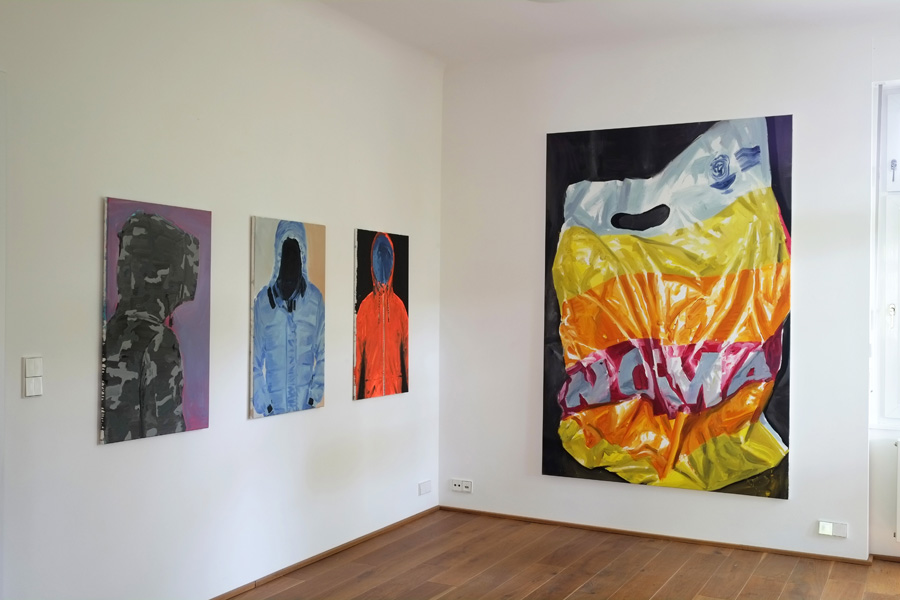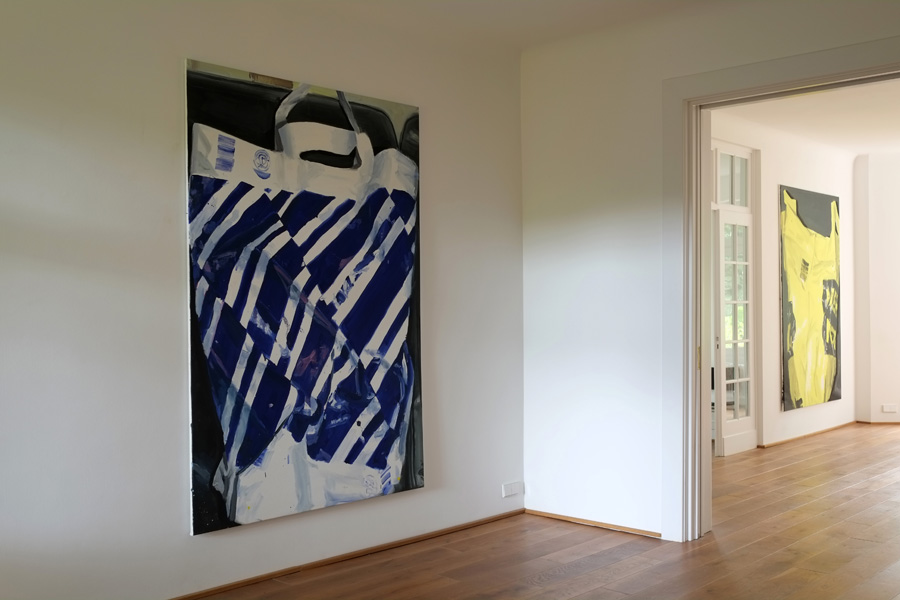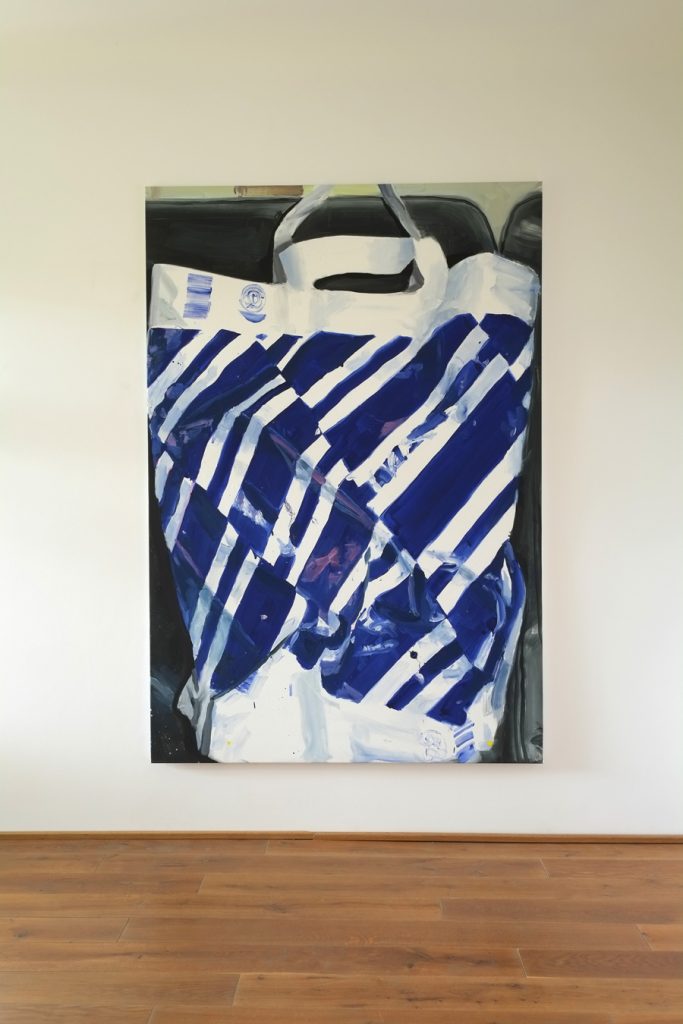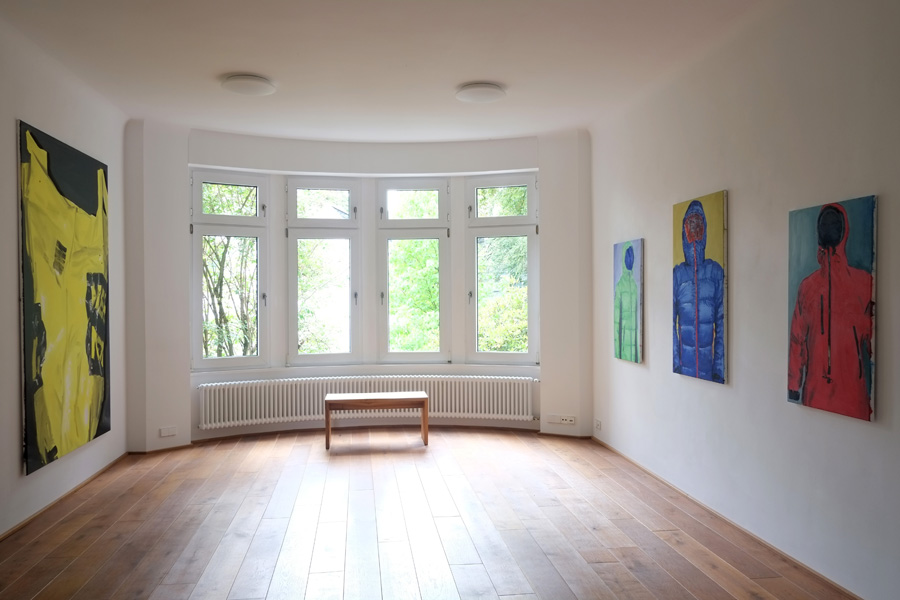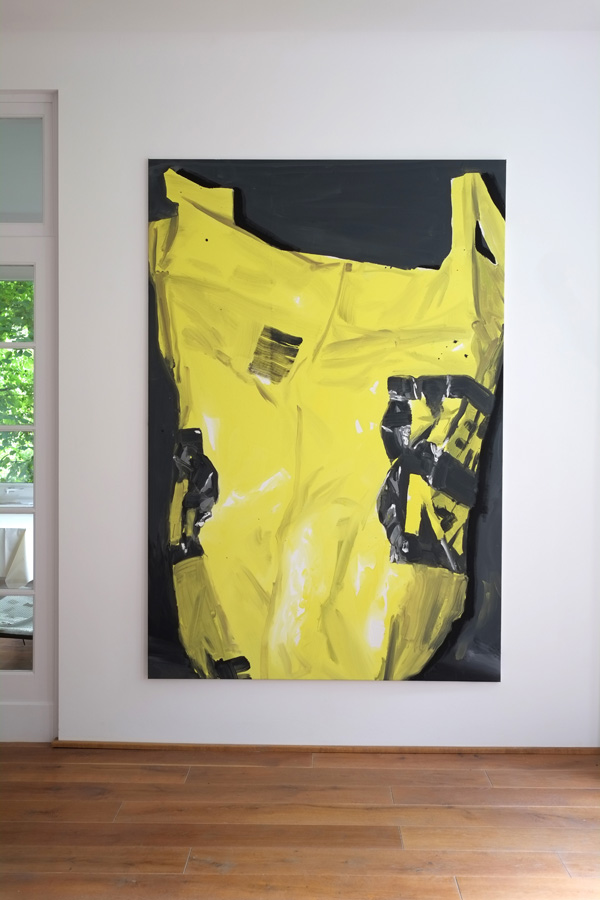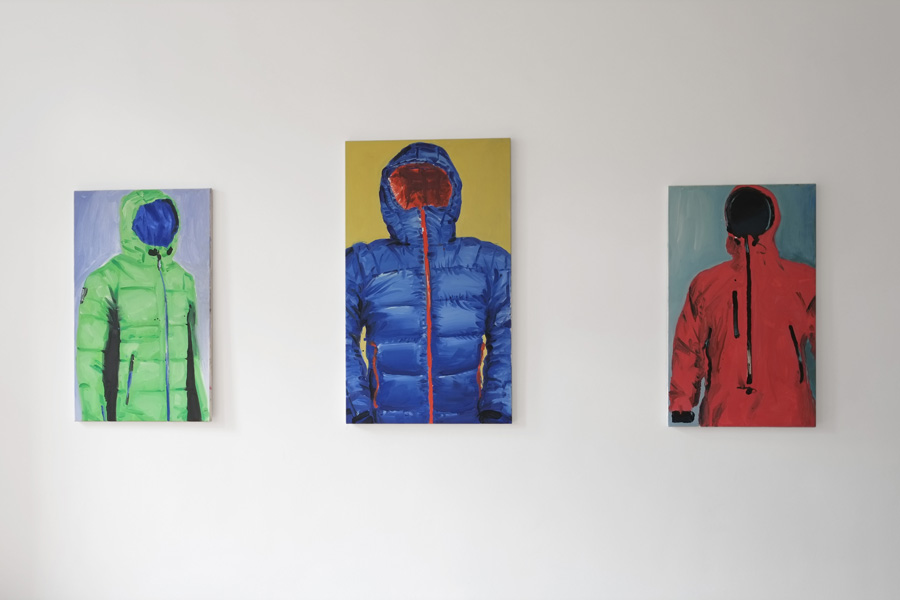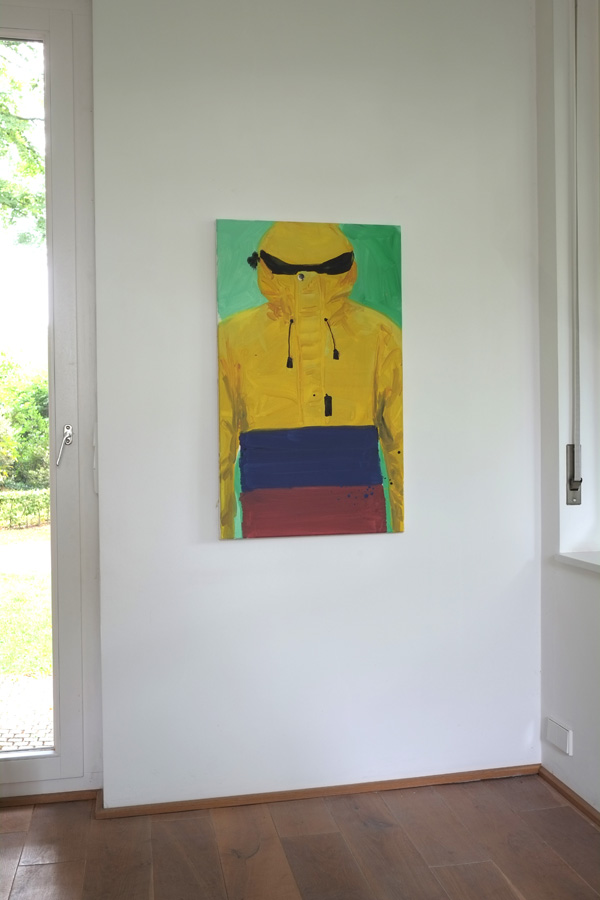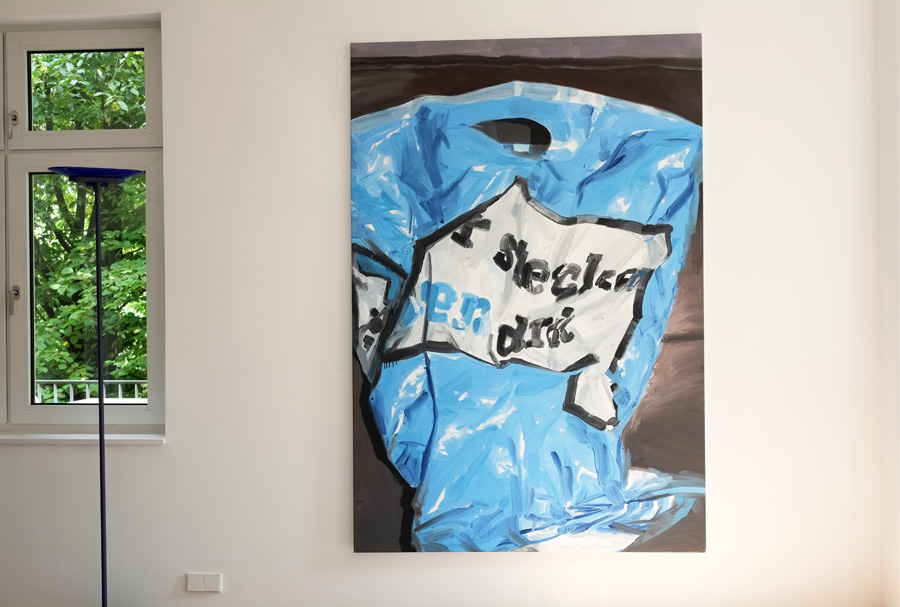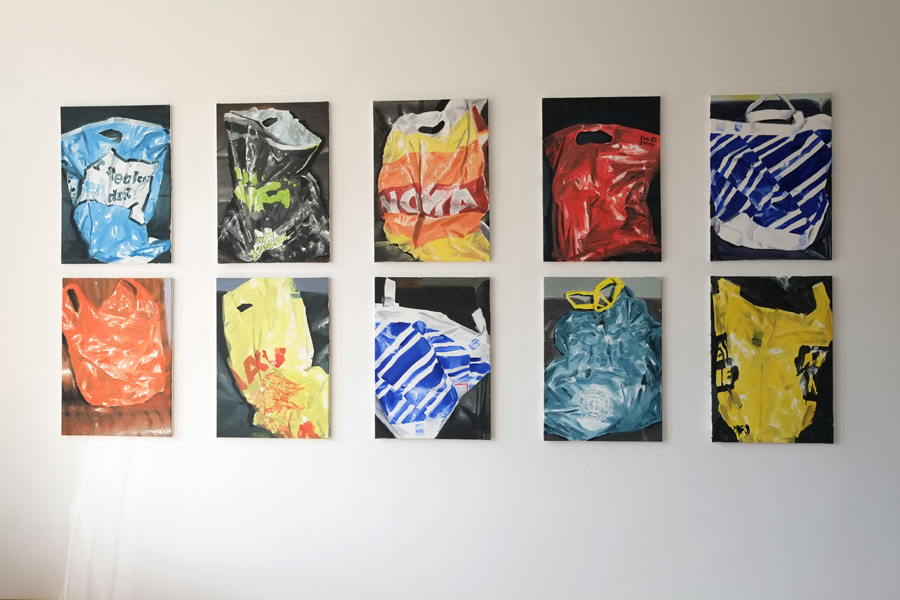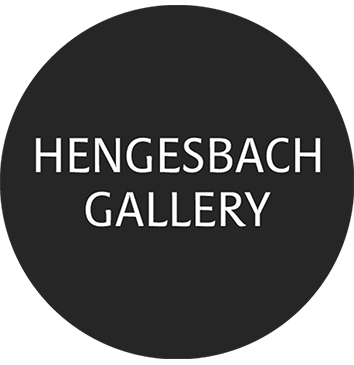Markus Willeke
June 5 – July 13, 2018
Is it possible to give a shapeless and completely disregarded, worthless object a dramatic painterly form? And what does such a transformation mean for the diagnosis of our present time?
Let us imagine a play in which the protagonist, a good-for-nothing, presents his botched life to us. If it were a real human being, we could rely on his human value and hope for a turning point in the events. But if an object were to play the main role, we might think that the object would be transformed into an idol through a reversal of the events. If the reversal fails to occur, our play would be about how we humans subordinate ourselves to the nullity of things.
Let us imagine an object that is produced at the lowest cost, only to be immediately thrown away. This object serves to transport other items home more or less undamaged. But it then ends up right away in the trash can or is carelessly discarded. The object is made of plastic, ultra-thin, it lies within reach, flat, without being bulky or taking up space, in a shelf at the checkout counter – the center of our present-day life, the place of monetary exchange. The object feels the same at every point and is light. Although it has no spatial volume, but only front and back side, one cannot even distinguish between them – our object is literally one-sided in every respect. When touched, it offers no material resistance. When used, it bulges out and conforms to whatever is packed into it. It cannot stand up by itself, is powerless, and only receives a three-dimensional form in the service of something else.
Can this object-based nullity become a painterly event? If one has not yet seen the paintings of Markus Willeke, one would exclude the possibility. But Willeke succeeds not only in adequately translating the plastic-like coloration into the completely different color canon of oil painting – above all, he succeeds in turning these inconspicuous beings into true heroes. Willeke makes his painting material glow. He draws on the sharp contrasts between the base color of the bags and their lettering to create a painterly battlefield of color rhythms. He uses their arbitrary formability to model folds into them like a medieval drapery painter – only with much more expressive energy – and at the same time twists them so that the individual letters of the advertising print fall apart and perform a free dance performance.
Finally, through the rhythm of a free play of light and shadow, the submissive nothingness becomes a living actor that does not remain flat but has physical volume. All of this is achieved through a rapid interplay of different brush widths and color modelings, which from a distance appear so plausible that one thinks it is the reality of the bag itself that is performing here as a stage actor. Up close, one becomes aware that it is in fact only the confidently applied color that stimulates this play and the joy of our seeing. Willeke’s color battle is, from a distance, so self-evident and plausible, and from up close so dizzyingly suggestive and subjective, that in the constant approaching and moving away from the paintings, one never tires of marveling at the repeated shift in visual experience.
One can now perhaps draw a bold arc back to the beginning of the great history of European painting. The late Gothic and early Renaissance painters increasingly sought to distinguish themselves from their medieval painting colleagues by moving away from giving individual saints merely schematic appearances and ensuring the recognizability of the image content solely through the addition of symbolic signs. Instead, through the modeling of movement and physical behavior, they slowly breathed life into their figures. They transformed the saints—whom they only knew from texts—more and more into corporeal actors, whom they allowed to enter into our lives.
In an analogous way, one can say that Markus Willeke is increasingly detaching himself from an artistic movement that has shaped our understanding of contemporary figurative art since the early 1960s: Pop Art. Pop Art used the representational techniques of print media to demonstrate to us—through shifts in scale and isolating focus—the mechanisms into which our consumer goods-driven lives are drawn. Willeke takes the painterly approach one step further. His diagnosis does not begin with a frozen mechanism, but with an unleashed dynamism. It is no longer the frozen symbol of the consumer world that animates his images, but the triviality of that world, which becomes a living actor by showing how this actor—plasticity—rises to perform, only to disappear again in the next moment.
Willeke uses the free mobility of painterly material to stage, within the tension of different modes of access and perception, the game that dominates us today: the attraction and self-empowerment of a trivial consumer world—and, at the same time, its illusory nature.
Installation Views
